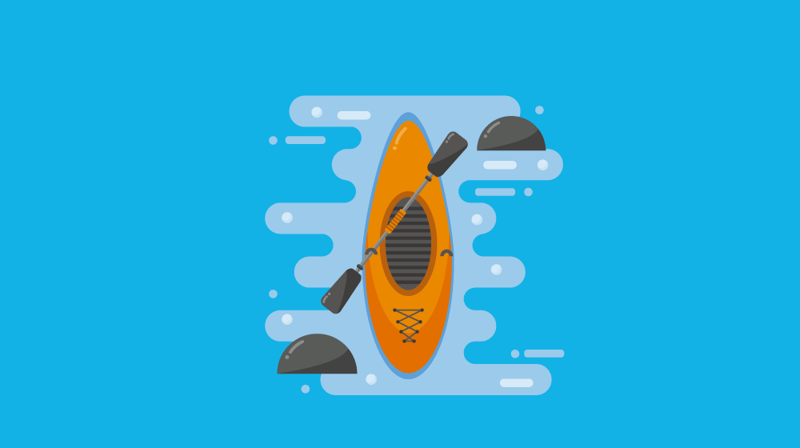It may be spring, but if you are a department director, you have one date looming over you: July 1st.
The new fiscal year comes quickly. Having a plan is key to a successful end-of-year budget season and starting the new fiscal year on the right foot.
Breezing through budget season means using time mid-to-late spring talking with your staff, brainstorming, developing wishlists, and strategizing on how to best use funds to advance your department’s work.
This can be time-consuming. It can also feel challenging to dream up new or effective options to spend down your budget in a way that is helpful or sustainable.

Why not skip a few steps in the brainstorming process and jump to the good stuff?
Below are six categories with purchasing ideas you can use to jumpstart your own planning process. These categories cover long-term investment items, not giveaways or prizes that you may already have ideas about and that need to be repurchased fairly frequently.
Let’s get shopping!
6 Ways to Spend Your Budget
1. Professional development
A webinar purchase is an easy way to invest funds in professional development. This might be for yourself, or you might make it an event by inviting your staff or another department to join. Check out these diversity-related webinars from JPHigherEd, or options from Innovative Educators and NASPA Focus Areas.
While many national conferences may have passed, there are still opportunities for networking and learning in this last part of the fiscal year. If your institution is seeking a bystander intervention program to adopt, consider attending the Step UP! Bystander Intervention Program Facilitator Training in May. This conference is open to any higher education professional interested in learning how to create a bystander intervention program for their campus.
In the month of June, NASPA hosts their Mid-Level Administrators Conference and Advisors Institute. Other opportunities may be out there: Be sure to check for local or regional conferences as well.
Memberships are another professional development option to spend down a budget. Explore ACPA and NASPA for general memberships and their benefits, such as discounted rates on conferences or access to resources.
Wellness staff might enjoy a membership to ACHA for survey instruments, data, and or their annual conference. You might also look for memberships more specific to your focus, such as professional associations for higher ed case managers, campus recreation staff, clinical counselors, or student conduct professionals.
Lastly, don’t forget certifications.
Health Communications Inc. offers their “TIPS for University program” (far-right tab on the homepage) and provides opportunities to earn a TIPS (Training and Intervention ProcedureS) certification. The best bet here to ensure the use of end-of-year funds is to host a “Train-the-Trainer” workshop on your campus. Invest for your staff to attend, and ask other departments to if they would like to send staff as well. A minimum of 7 attendees is required for hosting a closed workshop, which makes for a great team of TIPS certified trainers to start presenting this program in the new academic year.
Read more: 6 Creative Pathways for Professional Development, by Joe Levy
2. Co-sponsorships
Look for places where your funds can help co-sponsor campus events that are already scheduled to take place before the end of the academic year. This might include events like late-night breakfasts or end-of-semester stress relief programs. Your department could even host an event like this yourself.
There may also be a co-sponsorship available now for areas that are already planning for fall, such as a Week of Welcome effort where promotional items may be ordered in advance.
Read more: How to Build Powerful Campus Partnerships, by Niki Messmore
3. Technology
Tech purchases can help you make a dent in your funds and contribute to the efficiency and reach of your department. Do a search of #EdTech on Twitter and you’ll lift the curtain on a whole world of work geared to help us improve the way we prepare and help students. Software is chief among these efforts.
Online tools are also a great consideration: Wellness related options include any of the eCHECK UP TO GO programs or apps like iDrinkSmarter. Not in health promotions? There may be similar tools for your particular area. Check with your professional associations for ideas.
Upgrading your equipment or accessories is also a way to go: Audio speakers for music, laptops/iPads and their covers, desktops, printers, long cords for outside tabling, etc. These tech-related purchases improve department operations and support your staff in their daily work, a win-win for everyone, as well as your end-of-year budget.
Read more: How to get Technology out of Your Way, by Dustin Ramsdell
4. Streamline operations
Use this opportunity to identify ways you can streamline department operations with select purchases. If funds allow, purchasing a department golf cart can not only provide a means of transportation for your staff around campus, but could allow more student engagement opportunities with golf cart outreach programs like Cash Cab, Golf Cart Karaoke, or SURE Walk from the University of Texas-Austin.
A card reader would be a great addition to eliminate paper sign-ins at your events. Increase the storage and organization in your office by purchasing containers, shelving, or related office supplies. For example, investing in a few mobile folding carts will make traveling to programs or events on campus easier for your staff.
Read more: How to Run Campus Elections with Digital Forms, by Alex Pearson
5. Program support
Adding more programs and services to your department’s line-up is an excellent way to make use of end-of-year funds. For example, investing in JED Campus could be a way to bolster efforts in student emotional well-being.
Start researching early enough and you may be able to find financial support from campus partners or higher administration to ensure you can secure the program. Leading the conversation with the amount you can contribute is a smart way to go.
Counseling centers may be interested in purchasing programs such as TAO (Therapy Assistance Online) to supplement their offerings. Both counseling centers and health services may find investing in a 24-hour counseling or medical hotline, respectively, a great way to keep services accessible to students any time, especially after hours. Other purchase ideas include biofeedback equipment or massaging chairs to increase student stress management options.
Hosting a last-minute speaker or including add-ons for your end-of-year student banquet are quick ways to spend down a budget. Working with a higher ed consultant now to better inform your year ahead is also a good choice.
Looking towards the following year, there may be creative ways to support existing programs. For example, $5 or $10 Uber or Lyft gift cards would make a useful addition to next year’s alcohol safety-related programming for Halloween, football season, St. Patrick’s Day, or Safe Spring Break. You don’t have to be in Health Promotions to offer this — any department is likely to generate buzz with Uber or Lyft gift cards.
Depending on the rules of your institution, purchases like this could be an exciting way to enhance existing programs while spending down your budget before July 1.

Read more: 100 Ways to Reward Students, by Kayley Robsham
6. Increase visibility
Increase your presence and visibility on campus and you are more likely to increase student engagement with your area. Luckily, there are many options to choose from, and some of them are so easy you’ll wonder why you hadn’t secured them before.
Proper signage is key to event success. For advertising in the days leading up to your event, sandwich boards should not be overlooked. Their portability and versatility make them great for use year-round.
If your campus does not have a poster printer, this may be an additional purchase if you really have some budget to use. Although storage of the printer is a consideration, as well as ink replacements in the future, this is an investment that could step up your game in advertising.
Improve tabling efforts with table covers or tents featuring your logo, velcro tri-fold boards, and sign holders (vertical or horizontal options available). Demo display pieces are also a thought. Health promotions staff can make tables more interactive with drink display kits or healthy portion sizes demo kits, as examples.
Any department can use a Tabletop Spinning Prize Wheel to make their tabling events more interactive. Lastly, retractable banners or vinyl banners that can be hung from your building are good investments for promotions that are fairly non-date specific so they can be used year after year.
Read more: How to Effectively Advertise Student Events by Ruben Mercado
Have an end-of-year budget solution that isn’t featured here? Let us know on Twitter @themoderncampus and @PriyaThomas757!
Sending good vibes to all department directors and budget managers out there. The countdown to July 1st has begun and we are cheering you on to the finish line!





